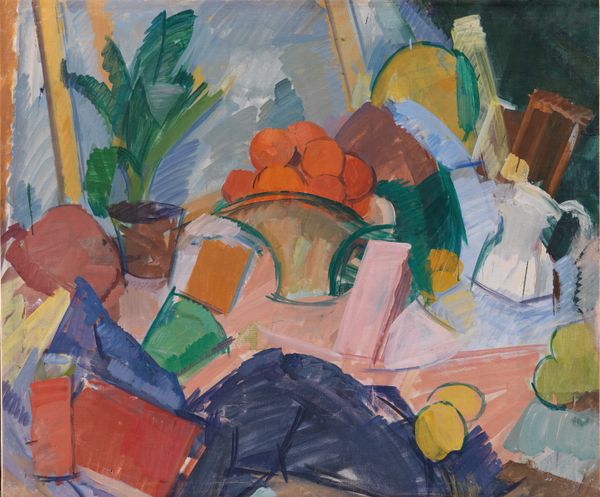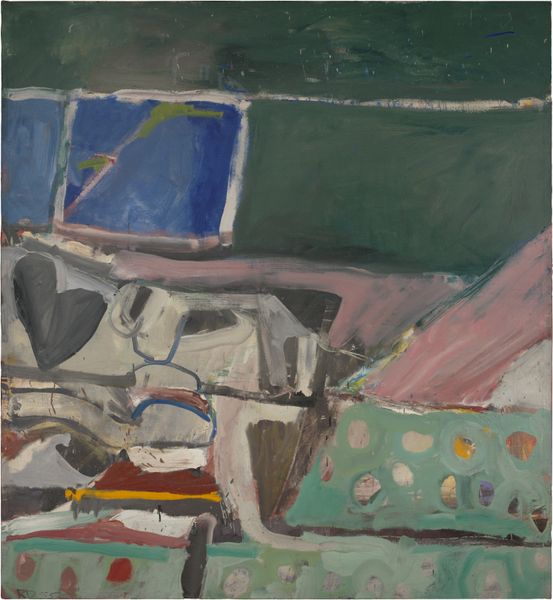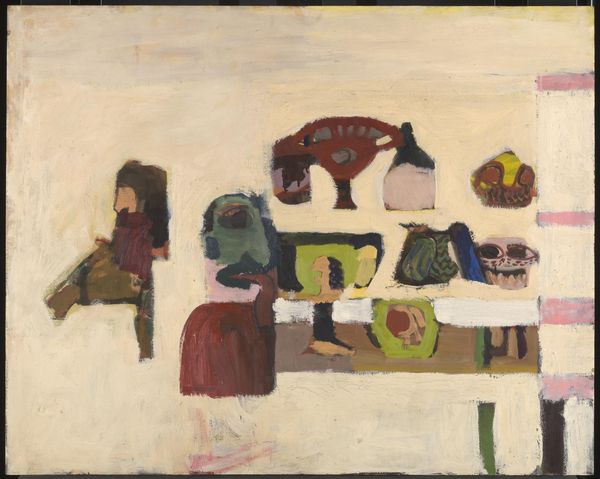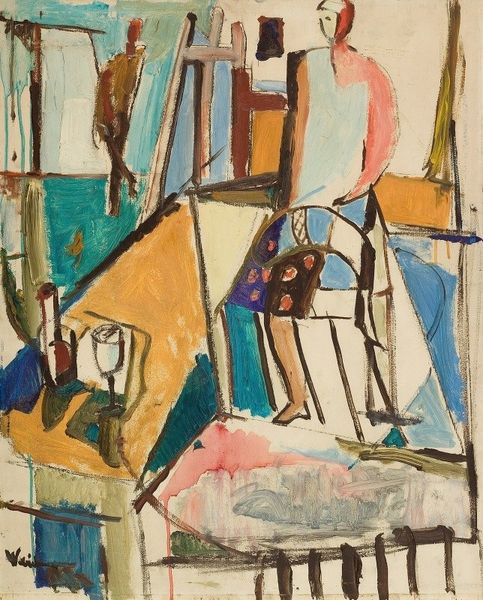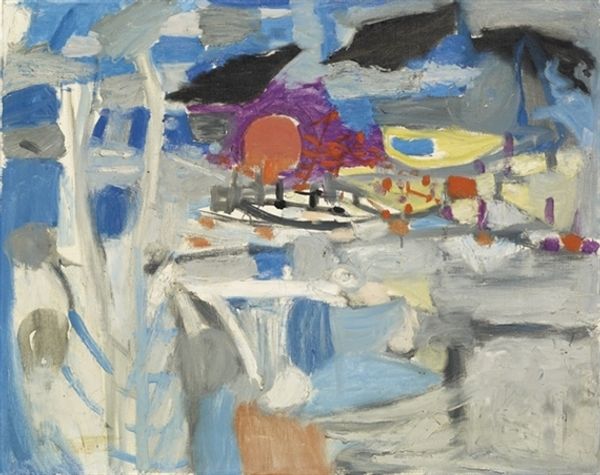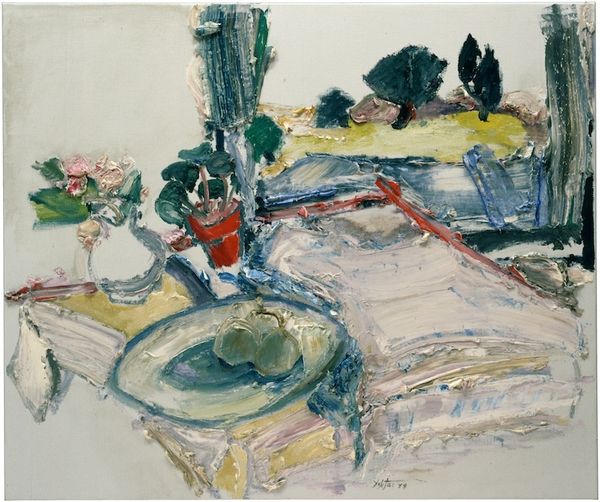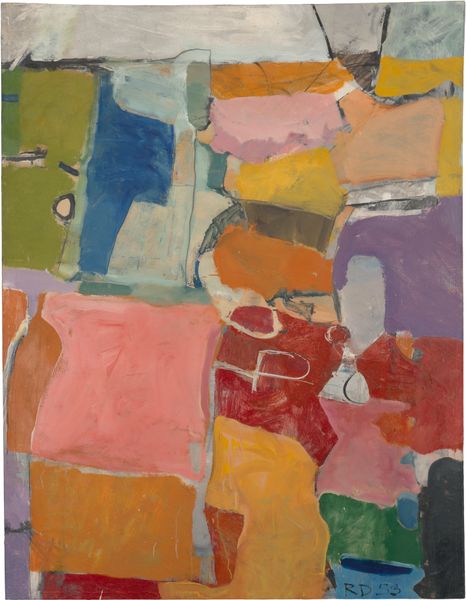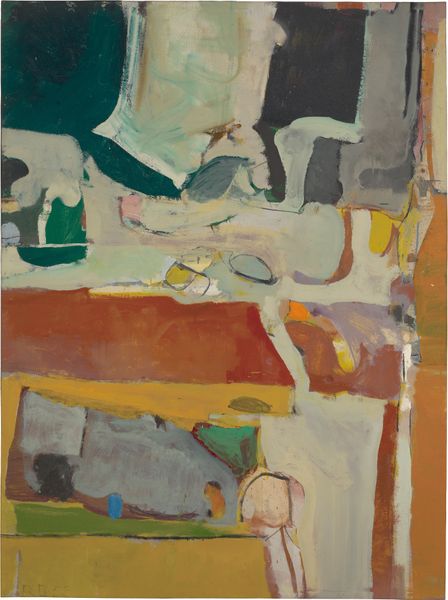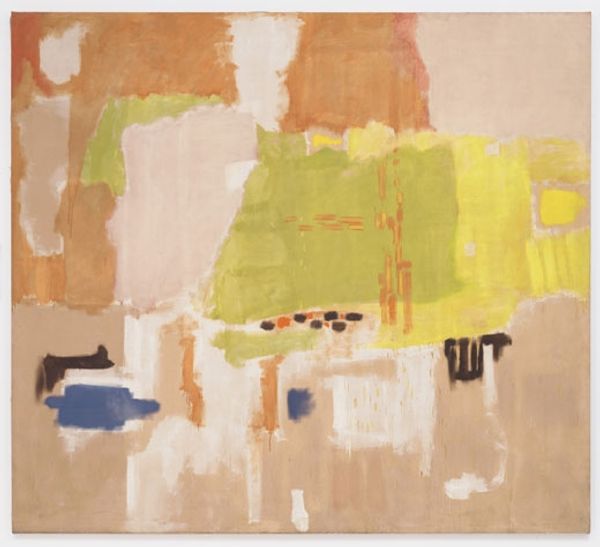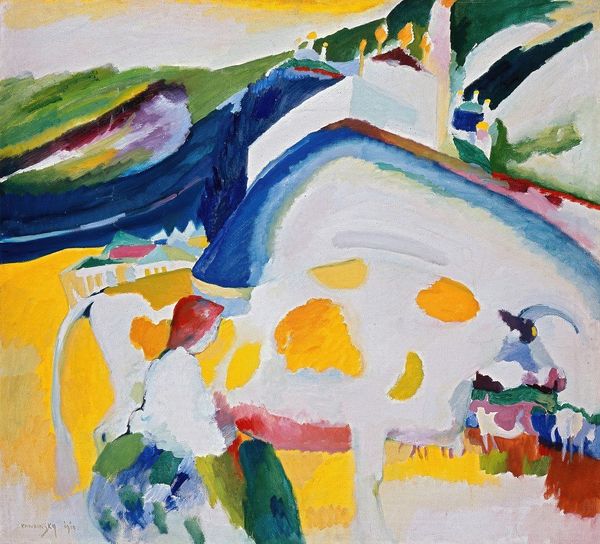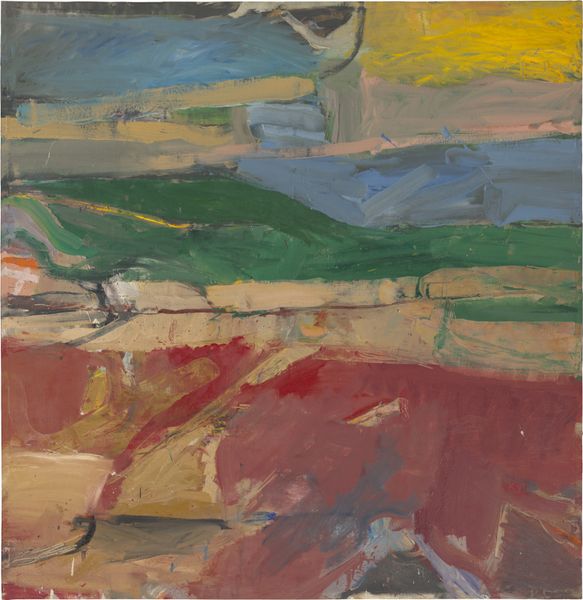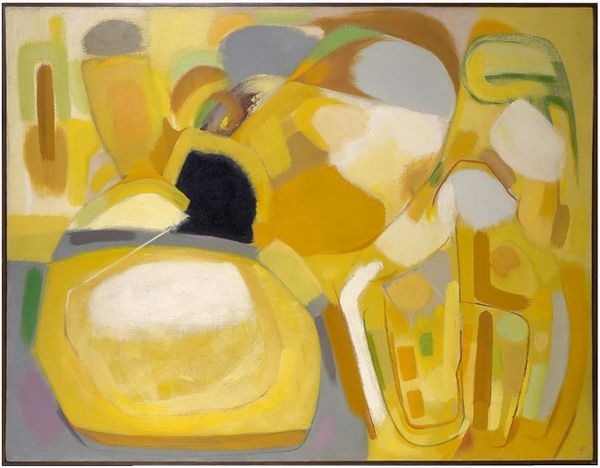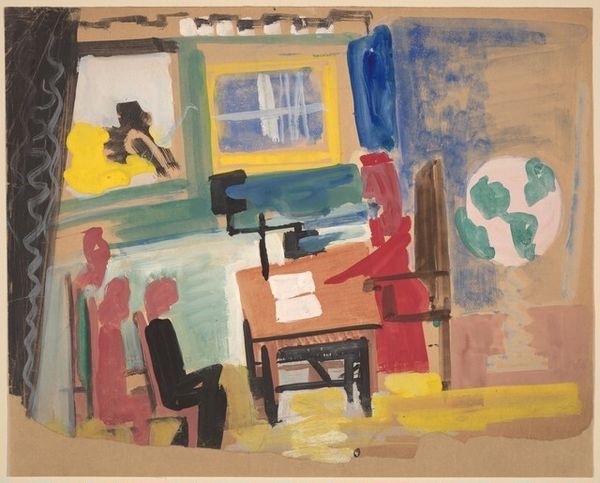
Copyright: Lee Krasner,Fair Use
Editor: This is Lee Krasner’s "Still Life" from 1938, painted in oil. It feels… unresolved? Like a puzzle of shapes, colors that are somehow both harmonious and jarring at the same time. I'm not quite sure what to make of it. What do you see in this piece? Curator: The “unresolved” quality is fascinating, isn't it? Consider the tradition of still life: traditionally, it spoke of abundance, skill, mortality. But what happens when you abstract those objects, break them down? The symbolism shifts. Is this abundance, or fragmented memory? Editor: Fragmented memory… that's interesting. So, like a dream? Curator: Perhaps. Krasner, and many artists of her generation, were deeply interested in psychoanalysis. They saw the potential of abstraction to tap into the subconscious. Look at the colors, the way forms are suggested but never fully realized. Do those visual strategies echo something about the symbolism? Editor: I see what you mean. The wine glass, for instance – it's almost there, but also not quite, hinting at the idea of celebration, but also fragility. Curator: Precisely. What cultural baggage does a wine glass have, even now? Also, consider the context: 1938, on the brink of war. Abstraction becomes a language to express anxieties, fears, that can’t be articulated directly. It bypasses reason. Editor: So, the fractured forms and clashing colors could be a reflection of the world falling apart around her? Curator: Precisely. Symbols decay. Meanings fracture, especially when they're forced to face an unstable external world. Krasner isn't just painting a still life; she's documenting the crumbling of cultural certainties. Does seeing that potential symbolism change how you respond to it? Editor: Definitely. It gives the painting a weight, a history, that I didn’t initially recognize. It makes me want to explore other artists who dealt with abstraction in similar ways. Curator: And that's the power of visual symbols – they speak across time, inviting us to decode their ever-evolving stories.
Comments
No comments
Be the first to comment and join the conversation on the ultimate creative platform.
